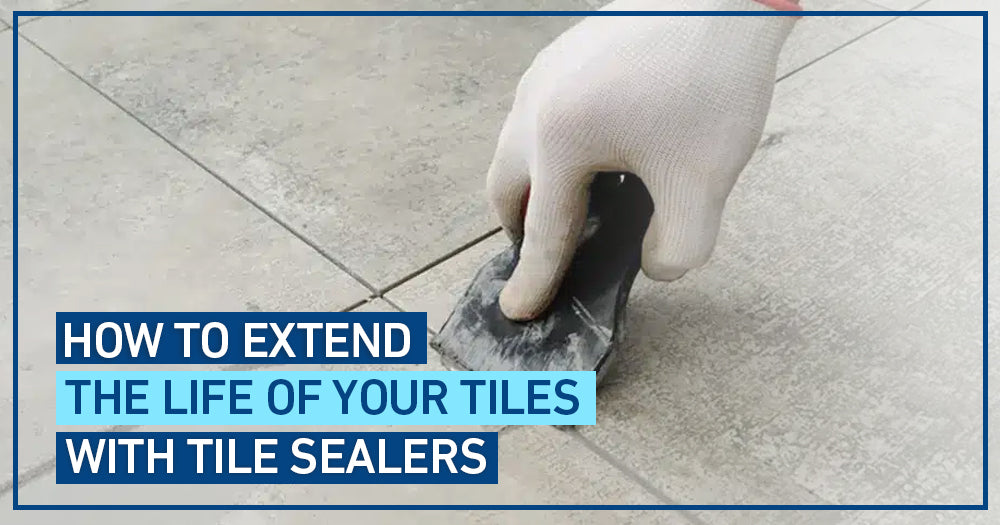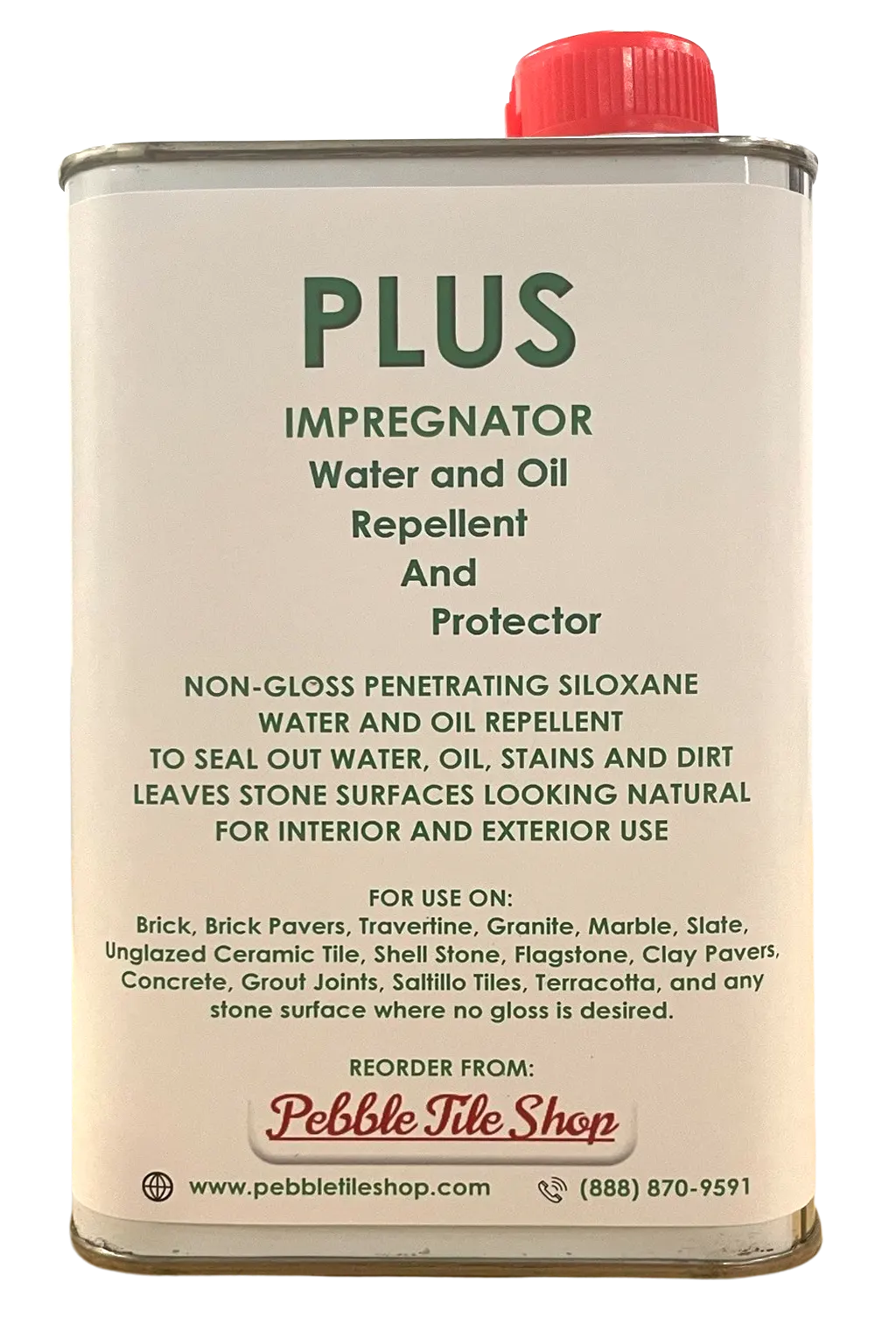Tiles have become one of the most popular flooring and wall covering materials for homeowners and businesses alike, thanks to their durability, aesthetic appeal, and low maintenance. Whether you're working with stone, ceramic, porcelain, or mosaic tiles, one thing is certain – your investment in tile can last for many years if properly maintained. One of the most effective ways to protect and prolong the life of your tiles is by using tile sealers. In this comprehensive guide, we’ll explore how tile sealers can extend the life of your tiles, their benefits, the types available, and how to apply them correctly.
By the end of this blog, you’ll understand why tile sealers are a must-have addition to your tile care routine, and how they can ensure your tiles continue to look fresh and beautiful for years to come.
What Are Tile Sealers?
Tile sealers are protective coatings applied to tiles to prevent moisture, stains, dirt, and wear from damaging the surface. They create a barrier that keeps harmful substances from penetrating the tile or grout, which can lead to discoloration, cracking, or other forms of damage over time. Tile sealers are especially important for porous tiles, such as natural stone, mosaic tiles, or ceramic tiles with porous grout lines.
These sealers work by forming a protective layer on the tile surface that repels liquids and debris. There are two main types of tile sealers: penetrating sealers and surface sealers. Both have their advantages depending on the type of tile and the specific needs of your space.
Why Should You Use Tile Sealers?
- Protect Against Stains and Discolouration
One of the most common issues tile owners face is staining. Tiles in high-traffic areas such as kitchens and bathrooms can become easily stained by water, food, or cleaning products. Tile sealers create an invisible shield that prevents liquids from seeping into the tile surface, thereby reducing the likelihood of stains. This is particularly beneficial for porous tiles like natural stone and mosaic tiles, which are more prone to staining.
- Maintain the Aesthetic Appeal
Tiles, especially natural stone and decorative mosaics, are designed to enhance the visual appeal of your home. Over time, dirt, grime, and spills can cause the tiles to lose their luster and shine. A tile sealer helps preserve the aesthetic appeal of your tiles by creating a glossy or matte finish that highlights the natural colors and textures of the tiles. By preventing discoloration and grime buildup, your tiles will continue to look beautiful and vibrant.
- Prevent Water Damage
Bathrooms, kitchens, and other high-moisture areas are particularly vulnerable to water damage. Water infiltration can lead to mildew growth, grout deterioration, and the weakening of tile adhesive, resulting in cracked or loose tiles. Tile sealers create a water-resistant barrier that helps prevent water from penetrating the tile and grout, ensuring that your tiles remain in excellent condition for years.
- Enhance Durability and Longevity
Tiles, especially those used in high-traffic areas, are subject to wear and tear. Over time, dirt, foot traffic, and abrasive cleaners can cause the surface of the tile to become scratched or damaged. By applying a tile sealer, you’re adding an extra layer of protection against such damage. This additional protection can significantly extend the life of your tiles, ensuring they maintain their appearance and functionality for a much longer period.
- Easy Maintenance
Sealed tiles are easier to clean and maintain because the sealer prevents dirt and grime from sticking to the surface. When your tiles are sealed, you’ll find that they resist stains and spills, making it much easier to wipe away dirt with a simple cloth or mop. This makes tile sealers particularly beneficial for homes with children, pets, or heavy foot traffic, as it reduces the need for frequent deep cleaning.
Types of Tile Sealers
Understanding the different types of tile sealers available will help you choose the right one for your tiles. Below, we’ll look at the two main types: penetrating sealers and surface sealers.
- Penetrating Sealers
Penetrating sealers, also known as impregnating sealers, soak into the tile and grout surface to create an invisible barrier beneath the surface. This type of sealer is perfect for natural stone tiles such as marble, granite, and limestone, as well as porous ceramic and mosaic tiles.
The main advantage of penetrating sealers is that they do not alter the natural appearance of the tiles. They allow the tile to breathe while still providing protection against moisture, dirt, and stains. These sealers are often favored for use on kitchen countertops, bathroom floors, and outdoor spaces because they provide long-lasting protection without affecting the tile’s natural texture or color.
- Surface Sealers
Surface sealers form a protective coating on top of the tile surface. These sealers are ideal for glossy tiles like porcelain, ceramic, and certain mosaic tiles that require an additional layer of shine. Surface sealers offer a high-gloss finish that enhances the visual appeal of the tiles, making them an excellent option for creating dramatic, eye-catching floors and walls.
While surface sealers provide excellent protection against stains and dirt, they may alter the appearance of the tiles, giving them a shiny or matte finish. Surface sealers are typically easier to apply and maintain than penetrating sealers, making them ideal for homeowners who want quick and effective results.
- Acrylic Sealers
Acrylic sealers are a type of surface sealer that forms a clear, protective layer over the tile. These sealers are widely used for ceramic, porcelain, and some types of natural stone tiles. Acrylic sealers provide excellent protection against stains, spills, and scratches, and they are relatively easy to apply. They offer a glossy finish and are perfect for areas where high aesthetics are important, such as living rooms, kitchens, and entryways.
- Silicone Sealers
Silicone sealers are often used in conjunction with grout lines or around tile edges. These sealers offer superior water resistance and are typically used in bathrooms, kitchens, and other areas prone to high moisture. Silicone sealers provide excellent adhesion and create a flexible seal that is ideal for areas exposed to heavy moisture. They help prevent water damage while preserving the structural integrity of both tiles and grout.
How to Apply Tile Sealers
Applying tile sealers can seem daunting, but with the right tools and technique, the process is relatively straightforward. Follow these step-by-step instructions to ensure a successful application:
Step 1: Clean the Tiles Thoroughly
Before applying any sealer, it’s essential to clean your tiles and grout thoroughly. Dirt, dust, and grime can prevent the sealer from bonding properly to the surface, so make sure to remove any debris. Use a mild cleaning solution and a soft brush or cloth to clean the tiles. If you’re sealing natural stone, be sure to use a cleaner that’s safe for the specific type of stone.
Step 2: Allow the Tiles to Dry
Once the tiles are cleaned, allow them to dry completely. Moisture left on the surface can interfere with the bonding process, so it’s important to ensure the tiles are dry before proceeding.
Step 3: Apply the Sealer
Using a clean cloth or applicator, apply the tile sealer evenly across the surface of the tiles. If you're working with mosaic tiles or intricate tile patterns, be sure to apply the sealer to all areas, including grout lines. Start in a small section and work your way across the tiles, making sure to apply the sealer in a thin, even layer.
Step 4: Allow the Sealer to Absorb
Most tile sealers will need time to absorb into the surface of the tiles. Follow the manufacturer’s instructions regarding how long the sealer should sit on the tiles before wiping off any excess. Some sealers may require a second coat, especially if the tiles are particularly porous.
Step 5: Wipe off Excess Sealer
After the appropriate amount of time has passed, use a clean cloth to wipe off any excess sealer. This ensures that the sealer doesn’t form a sticky or uneven coating on the surface of the tiles.
Step 6: Allow the Sealer to Cure
Once you’ve applied the sealer, let it cure for the recommended time before using the area. This ensures that the sealer has properly bonded with the tiles and will provide maximum protection. Typically, sealers take anywhere from 24 to 72 hours to fully cure, depending on the product.
Where to Use Tile Sealers
Tile sealers are ideal for a variety of spaces within your home, including:
- Kitchen countertops: Protect your countertops from stains and spills.
- Bathroom floors and walls: Prevent water damage and mildew growth.
- Backsplashes: Keep the surface clean and shiny by sealing it against grease and food splatters.
- Outdoor areas: Ensure that outdoor tiles, such as those in patios and walkways, remain protected from the elements.
Tile Sealers for Mosaic Tiles
When it comes to mosaic tiles, tile sealers are especially important. Due to the intricate patterns and often porous grout lines, mosaic tiles can accumulate dirt and stains quickly. Sealing your mosaic tiles helps prevent grime from settling into grout lines and keeps the vibrant colors of the tile intact.
At Tile Hub, we offer a range of high-quality tile sealers specifically designed to protect and maintain the beauty of your stone mosaic tiles. Our products are perfect for ensuring your mosaic tiles remain beautiful and long-lasting.
Conclusion
Using tile sealers is one of the most effective ways to extend the life of your tiles and ensure that they continue to look beautiful for years to come. Whether you’re working with stone, mosaic, ceramic, or porcelain tiles, applying the right tile sealer will protect your investment and enhance the overall appearance of your home.







